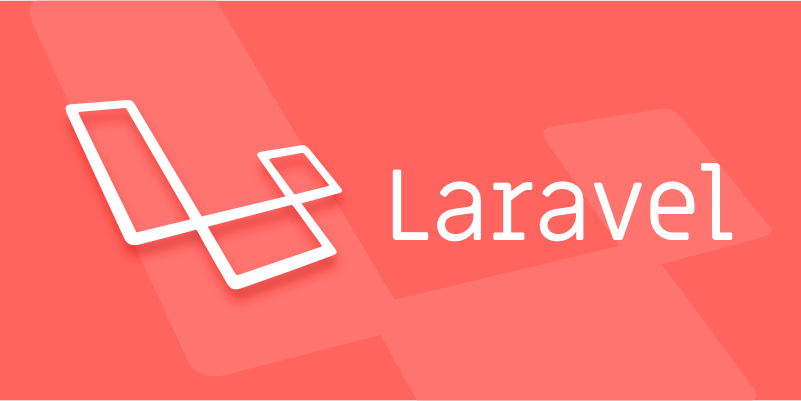Handling HTTP Requests and Responses in Laravel.
Jul 16, 2025 am 03:21 AMThe core of handling HTTP requests and responses in Laravel is to master the acquisition of request data, response return and file upload. 1. When receiving request data, you can inject the Request instance through type prompts and use input() or magic methods to obtain fields, and combine validate() or form request classes for verification; 2. Return response supports strings, views, JSON, responses with status codes and headers and redirect operations; 3. When processing file uploads, you need to use the file() method and store() to store files. Before uploading, you should verify the file type and size, and the storage path can be saved to the database.

Handling HTTP requests and responses in Laravel is the core part of building web applications. The framework itself provides very convenient tools to receive request data, process logic, and return appropriate response content. The key is to understand how the controller method receives the request object and how different types of responses are constructed.

Receive request data
Laravel's controller method can automatically inject Illuminate\Http\Request instance through type prompts, so that you can easily obtain user-submitted data.
For example, when you want to get a form submitted field:

use Illuminate\Http\Request;
public function store(Request $request)
{
$name = $request->input('name');
$email = $request->input('email');
} In addition to input() method, you can also use more intuitive magic methods:
$email = $request->email;
In addition, verification request data is also common. Laravel provides two ways: one is to use $request->validate() directly in the controller; the other is to use a special form request class (Form Request). The latter is more suitable for complex verification scenarios and is more conducive to code reuse.

Tips: If you need to get all input data, you can use
$request->all(), but be careful to avoid inserting directly into the database to prevent mass assignment vulnerabilities.
Return to the response content
Laravel supports various ways to return responses to the client. The easiest way is to directly return strings or views:
return view('welcome');
If you want to return JSON data, you can use response()->json() :
return response()->json([
'status' => 'success',
'data' => $user
]);Sometimes you also need to set status codes or header information:
return response('Hello', 200)
->header('Content-Type', 'text/plain')
->header('X-Header-One', 'Header-Value');If it is a redirect operation, Laravel also has a simple method:
- Redirect to the named route:
return redirect()->route('home'); - Redirect back to the previous page:
return back(); - Redirect with input data:
return redirect()->back()->withInput();
Process file upload
Laravel's request object can also easily handle the upload process when your form contains files. First make sure that the form uses enctype="multipart/form-data" and then obtain the uploaded file through file() method:
if ($request->hasFile('avatar')) {
$file = $request->file('avatar');
$path = $file->store('avatars');
} Laravel's file storage system is used here, which will be saved to storage/app/ directory by default. You can specify a disk drive (such as S3 or public):
$path = $file->store('avatars', 's3');
After the upload is successful, the path is usually required to be saved to the database. For example:
$user->avatar = $path; $user->save();
Note: It is best to do some verification before uploading the file, such as limiting the size and type, which can be done in combination with
$request->validate().
Basically that's it. Master these three contents - obtaining request parameters, returning responses, and processing upload files, you can handle most common HTTP interactions freely in Laravel.
The above is the detailed content of Handling HTTP Requests and Responses in Laravel.. For more information, please follow other related articles on the PHP Chinese website!

Hot AI Tools

Undress AI Tool
Undress images for free

Undresser.AI Undress
AI-powered app for creating realistic nude photos

AI Clothes Remover
Online AI tool for removing clothes from photos.

Clothoff.io
AI clothes remover

Video Face Swap
Swap faces in any video effortlessly with our completely free AI face swap tool!

Hot Article

Hot Tools

Notepad++7.3.1
Easy-to-use and free code editor

SublimeText3 Chinese version
Chinese version, very easy to use

Zend Studio 13.0.1
Powerful PHP integrated development environment

Dreamweaver CS6
Visual web development tools

SublimeText3 Mac version
God-level code editing software (SublimeText3)

Hot Topics
 What are policies in Laravel, and how are they used?
Jun 21, 2025 am 12:21 AM
What are policies in Laravel, and how are they used?
Jun 21, 2025 am 12:21 AM
InLaravel,policiesorganizeauthorizationlogicformodelactions.1.Policiesareclasseswithmethodslikeview,create,update,anddeletethatreturntrueorfalsebasedonuserpermissions.2.Toregisterapolicy,mapthemodeltoitspolicyinthe$policiesarrayofAuthServiceProvider.
 How do I run tests in Laravel? (php artisan test)
Jun 13, 2025 am 12:02 AM
How do I run tests in Laravel? (php artisan test)
Jun 13, 2025 am 12:02 AM
ToruntestsinLaraveleffectively,usethephpartisantestcommandwhichsimplifiesPHPUnitusage.1.Setupa.env.testingfileandconfigurephpunit.xmltouseatestdatabaselikeSQLite.2.Generatetestfilesusingphpartisanmake:test,using--unitforunittests.3.Writetestswithmeth
 What is the purpose of the artisan command-line tool in Laravel?
Jun 13, 2025 am 11:17 AM
What is the purpose of the artisan command-line tool in Laravel?
Jun 13, 2025 am 11:17 AM
Artisan is a command line tool of Laravel to improve development efficiency. Its core functions include: 1. Generate code structures, such as controllers, models, etc., and automatically create files through make: controller and other commands; 2. Manage database migration and fill, use migrate to run migration, and db:seed to fill data; 3. Support custom commands, such as make:command creation command class to implement business logic encapsulation; 4. Provide debugging and environment management functions, such as key:generate to generate keys, and serve to start the development server. Proficiency in using Artisan can significantly improve Laravel development efficiency.
 What are controllers in Laravel, and what is their purpose?
Jun 20, 2025 am 12:31 AM
What are controllers in Laravel, and what is their purpose?
Jun 20, 2025 am 12:31 AM
The main role of the controller in Laravel is to process HTTP requests and return responses to keep the code neat and maintainable. By concentrating the relevant request logic into a class, the controller makes the routing file simpler, such as putting user profile display, editing and deletion operations in different methods of UserController. The creation of a controller can be implemented through the Artisan command phpartisanmake:controllerUserController, while the resource controller is generated using the --resource option, covering methods for standard CRUD operations. Then you need to bind the controller in the route, such as Route::get('/user/{id
 How do I use Laravel's validation system to validate form data?
Jun 22, 2025 pm 04:09 PM
How do I use Laravel's validation system to validate form data?
Jun 22, 2025 pm 04:09 PM
Laravelprovidesrobusttoolsforvalidatingformdata.1.Basicvalidationcanbedoneusingthevalidate()methodincontrollers,ensuringfieldsmeetcriterialikerequired,maxlength,oruniquevalues.2.Forcomplexscenarios,formrequestsencapsulatevalidationlogicintodedicatedc
 Caching Strategies | Optimizing Laravel Performance
Jun 27, 2025 pm 05:41 PM
Caching Strategies | Optimizing Laravel Performance
Jun 27, 2025 pm 05:41 PM
CachinginLaravelsignificantlyimprovesapplicationperformancebyreducingdatabasequeriesandminimizingredundantprocessing.Tousecachingeffectively,followthesesteps:1.Useroutecachingforstaticrouteswithphpartisanroute:cache,idealforpublicpageslike/aboutbutno
 What is the .env file in Laravel, and how do I use it?
Jun 22, 2025 am 01:03 AM
What is the .env file in Laravel, and how do I use it?
Jun 22, 2025 am 01:03 AM
The .env file is a configuration file used in the Laravel project to store environment variables. It separates sensitive information from code and supports multi-environment switching. Its core functions include: 1. Centrally manage database connections, API keys and other configurations; 2. Call variables through env() or config() functions; 3. After modification, the configuration needs to be refreshed before it takes effect; 4. It should not be submitted to version control to prevent leakage; 5. Multiple .env files can be created for different environments. When using it, you should first define variables and then call them in conjunction with configuration file to avoid direct hard coding.
 How do I use the assert methods in Laravel tests?
Jun 14, 2025 am 12:38 AM
How do I use the assert methods in Laravel tests?
Jun 14, 2025 am 12:38 AM
In Laravel tests, the assert method is used to verify that the application is running as expected. Common assert methods include assertTrue(), assertFalse(), assertEquals(), and assertNull(), which are used to verify that the values ??in the logic meet expectations. For HTTP responses, you can use assertStatus(), assertRedirect(), assertSee(), and assertJson() to verify the response status and content. Database verification can be used through assertDatabaseHas() and assertDatabaseMissing






